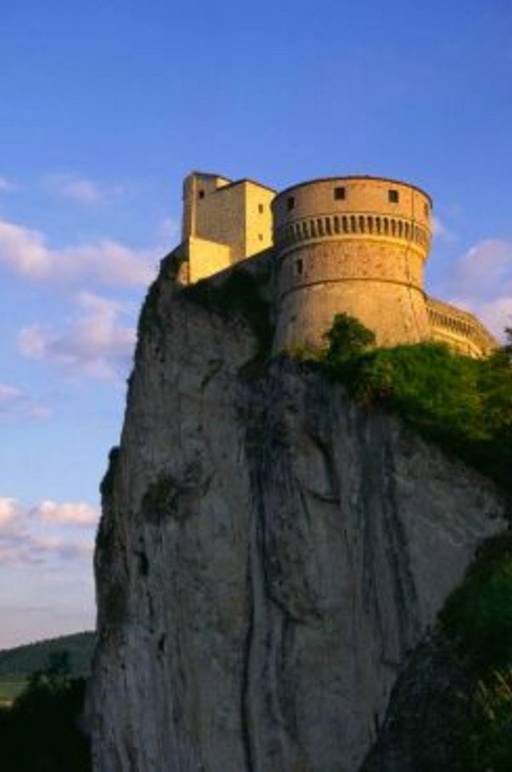Time to Discover Italy's Magical Small Towns
ROME -- Summer is the perfect time to explore Italy's outlying small towns, many of them magical ancient "borghi" (plural for "borgo") on hilltops too far to be reached by the cruise ships and big tour operators. Keeping these towns alive is a challenge being met, not only by Italians, but by foreigners as well. For the independent traveler, they are a treasurehouse.
One way to keep them alive is through music. Every summer Antonio Lysi organizes the music festival called Incontri in Terra di Siena, in which some of the performances, which range from classical music of the highest quality to more folcloristic performances, take place in an imposing villa and in large and small theaters in borghi within the Valdichiana area near Siena, in Tuscany, and include Pienza, Chianciano and the Città della Pieve. This year's festival takes place from July 29 through August 5. For information, see >>>
Another town off the beaten track where music has helped attract visitors is San Leo, near Rimini, where pianist and orchestra conductor Stefano Cucci directs a music festival with performances in the cathedral and in another venerable church in early July and again in early August. At these festivals the famous Ennio Morricone has conducted the orchestra and violinist Uto Ughi has performed. For details of this year's performances, see >>>
In the Abruzzo region, Daniele Kihlgren, 46, of the Swedish cement industrial family, was behind the successful renovation beginning in 1999 of Santo Stefano in Sassanio. The borgo had been built by the Medici during the Renaissance on a mountaintop 1,250 M high as a stopover for their merchants en route from Florence to the Adriatic Seacoast and its markets there. Kihlgren, fascinated by Santo Stefano, just 90 miles from Rome, decided to invest in the town, where, in 2001, three-quarters of the homes had been abandoned completely, and only 70 people still lived there.
Within just a few years, 30 craft shops, art galleries, boutiques and small restaurants had been opened. People were again living there, and in one year five new mini-hotels recorded 7,300 visitor presences, including my own family's; Lucio Dalla is said to be a frequent visitor, and Kihlgren himself came to be known as "the man who saves the borghi." His funding was also behind the invention in Santo Stefano of the so-called "albergo diffuso," or scattered hotel, in which visitors are put into elegantly refurbished abandoned dwellings (to date, some two dozen houses have been restored).
Speaking of his project, Kihlgren once told an Italian journalist that, "This perfect integration between historic houses and the landscape, these borghi built upon high hilltops in the age of the castles, this extraordinary sense of balance and harmony: this is the true Itaian heritage, as seductive as it is systematically compromised." Such was the success at Santo Stefano that Kihlgren committed himself to preservation of five more ancient borghi, beginning with the Sassi di Matera, where the idea of the albergo diffuso was continued despite the considerable difficulties of removing moss and bushes from the old grottos. Others were Montebello sul Sangro near Chieti, Matese near Teramo, Rocchetta a Volturno near Isernia, Frattura Vecchia near Scanno in the province of L'Aquila and Rocca Calascio, again near L'Aquila.
Italy is not the only country to have its old towns abandoned by inhabitants who move into the big cities. Throughout Europe there are 15,000 "suffering borghi," in the words of Domenico Lanciano, who created the cultural association in Agnone del Molise in the Italian South called Università delle Generazioni (University of Generations), a cultural association dedicated, since 1986, to saving the old towns from what he calls the "desertification" of rural and especially mountain zones.
"So many have become ghost towns," says Lanciano. "We need to build a widespread, deeply felt awareness beginning in the schools in order to encourage the new generations to contribute to the 'save a borgo' program, if we want to avoid the catastrophe of their loss." Supporting Lanciano's campaign is a group of young mayors he calls "apostles and leaders" of saving the borgo. Already, he says, numerous associations, and not only in Italy, have been created to try to stem the tide of historical towns that risk extinction.






































i-Italy
Facebook
Google+
This work may not be reproduced, in whole or in part, without prior written permission.
Questo lavoro non può essere riprodotto, in tutto o in parte, senza permesso scritto.